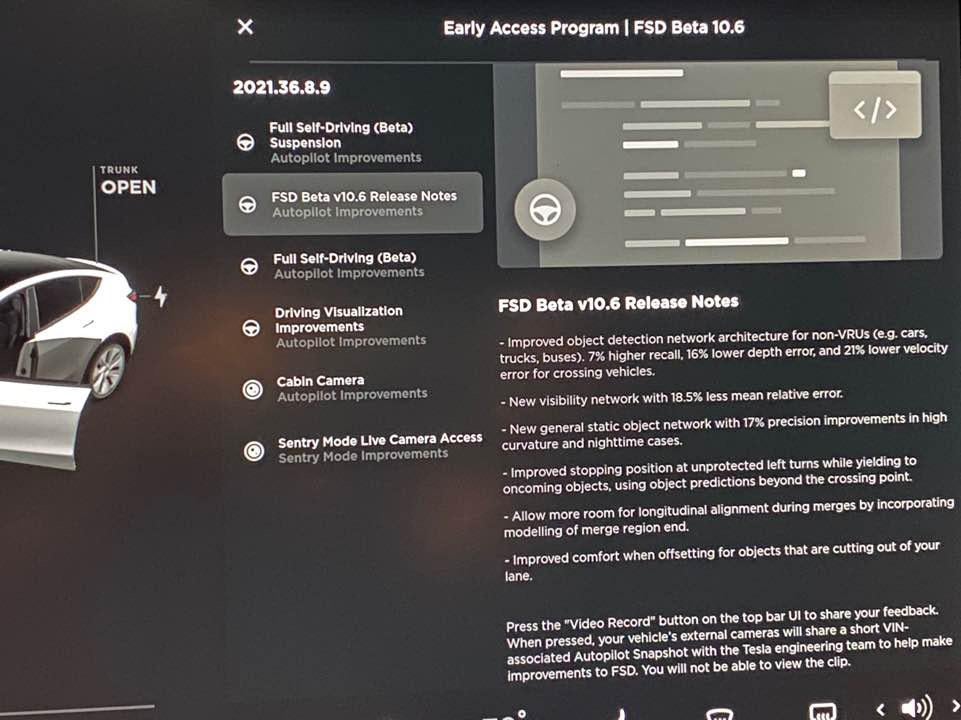
Tesla has started to push a new Full Self-Driving Beta software update (version 10.6) to its fleet with improved object detection.
It’s the latest step in the long road to improve the FSD package and deliver on a promise to customers that has been delayed several times.
Tesla is currently slowly rolling out what it is calling Full Self-Driving Beta (FSD Beta), which is an early version of its self-driving software currently being tested by a fleet of Tesla owners selected by the company and through its “safety test score.“
The software enables the vehicle to drive autonomously to a destination entered in the car’s navigation system, but the driver needs to remain vigilant and ready to take control at all times.
Since the responsibility lies with the driver and not Tesla’s system, it is still considered a level 2 driver-assist system despite its name. It has been sort of a “two steps forward, one step back” type of program as some updates have seen regressions in terms of the driving capabilities.
In recent updates, the automaker has been releasing more details about the changes to the driving behaviors in the release notes.
Last month, we reported on the FSD 10.5 update with the release notes.
Today, Tesla is starting to push a new version of the Full Self-Driving Beta to owners in the US with a safety score of 98 and up.
Tesla wrote about the changes in version 10.6 in the release notes:
- Improved object detection network architecture for non-VRUs (e.g. cars, trucks, buses). 7% higher recall. 16% lower depth error, and 21% lower velocity error for crossing vehicles.
- New visibility network with 18.5% less mean relative error.
- New general static object network with 17% precision improvements in high curvature and nighttime cases.
- Improved stopping position at unprotected left turns while yielding to oncoming objects, using object predictions beyond the crossing point.
- Allow more room for longitudinal alignment during merges by incorporating modelling of merge region end.
- Improved comfort when offsetting for objects that are cutting out of your lane.
The automaker has been guiding that the improvement rate will increase with its Dojo supercomputer.
Earlier this week, we reported on Tesla releasing new footage of its auto labeling tool for its self-driving effort.
With auto labeling and Dojo combined, we might start to see this accelerated improvement rate.
Subscribe to Electrek on YouTube for exclusive videos and subscribe to the podcast.
Author: Fred Lambert
Source: Electrek





